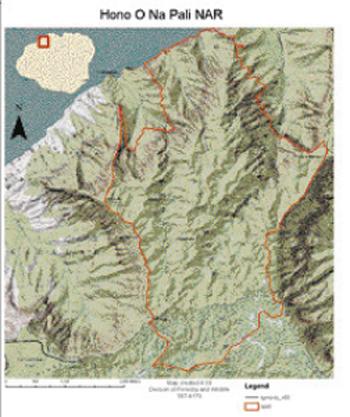KOKE‘E — Three native birds unique to the island — the Kama‘o, O‘u and ‘O‘o — vanished from sight during the 1980s due to habitat destruction. According to the Department of Land and Natural Resources, more native species could share
KOKE‘E — Three native birds unique to the island — the Kama‘o, O‘u and ‘O‘o — vanished from sight during the 1980s due to habitat destruction.
According to the Department of Land and Natural Resources, more native species could share the same fate if the protected Hono O Na Pali Natural Area Reserve and Alaka‘i Wilderness Preserve are not expanded.
“There are many threats that have caused the degradation of indigenous ecosystems and the species that comprise them,” said Natural Area Reserves System Enhancement Coordinator Emma Yuen. “In some cases, the habitat has been so degraded that species need extra work to prevent their extinction, such as birds being predated by rats and diseases, or native plants that have been eaten by non-native animals.”
To help prevent the extinction of Kaua‘i’s native flora and fauna, the State of Hawai‘i recently added 486 acres of preserved land to the system’s Waimea district, bringing the total size of the Hono O Na Pali Natural Area Reserve to 3,579 acres.
“This area has native montane bogs and wet forest that is unique to the Natural Area Reserve System,” Yuen said. “This area is part of the largest system of high-elevation bogs in the Hawaiian Islands. In the intact native wet forest, many species of rare and endangered plants and animals survive.”
Rare plants that only exist on Kaua‘i, like the Myrsine petiolata, commonly known as Kolea, that been used for centuries for practical and spiritual purposes by the native Hawaiian people, are currently at odds with “alien species,” such as wild pigs and strawberry guava.
“In this area are plants and animals that only live on Kaua‘i,” Yuen said. “By protecting them, we help preserve the natural, as well as cultural heritage of the island for future generations.”
A forecasted management planwill seek community input, added Yuen.
“Guiding the plan will be the purpose of protecting the native species from threats such as ungulate — hooved animals — damage, and high-priority weeds that can take over the native forest,” Yuen said.
Unless otherwise specified, the public is granted access to the new section of the Hono O Na Pali Natural Area Reserve for hiking or small nature study groups.
On Saturday, DLNR is offering a free, guided hike of the area, which will reveal the names and uses of several native plant species along the way.
“The guided hike is meant to encourage the residents of Kaua‘i to learn about and appreciate the unique and fascinating ecosystems, as well as their importance for traditional and modern human existence,” Yuen said.
The group will meet at 9:30 a.m. in the parking lot at the start of the Pihea trail, and hike for an approximately 1.5 miles round trip to visit the new natural area reserve, ending at 11:45 a.m.
For more information on the hike, contact Yuen at 808-366-4788 or Emma.Yuen@hawaii.gov


